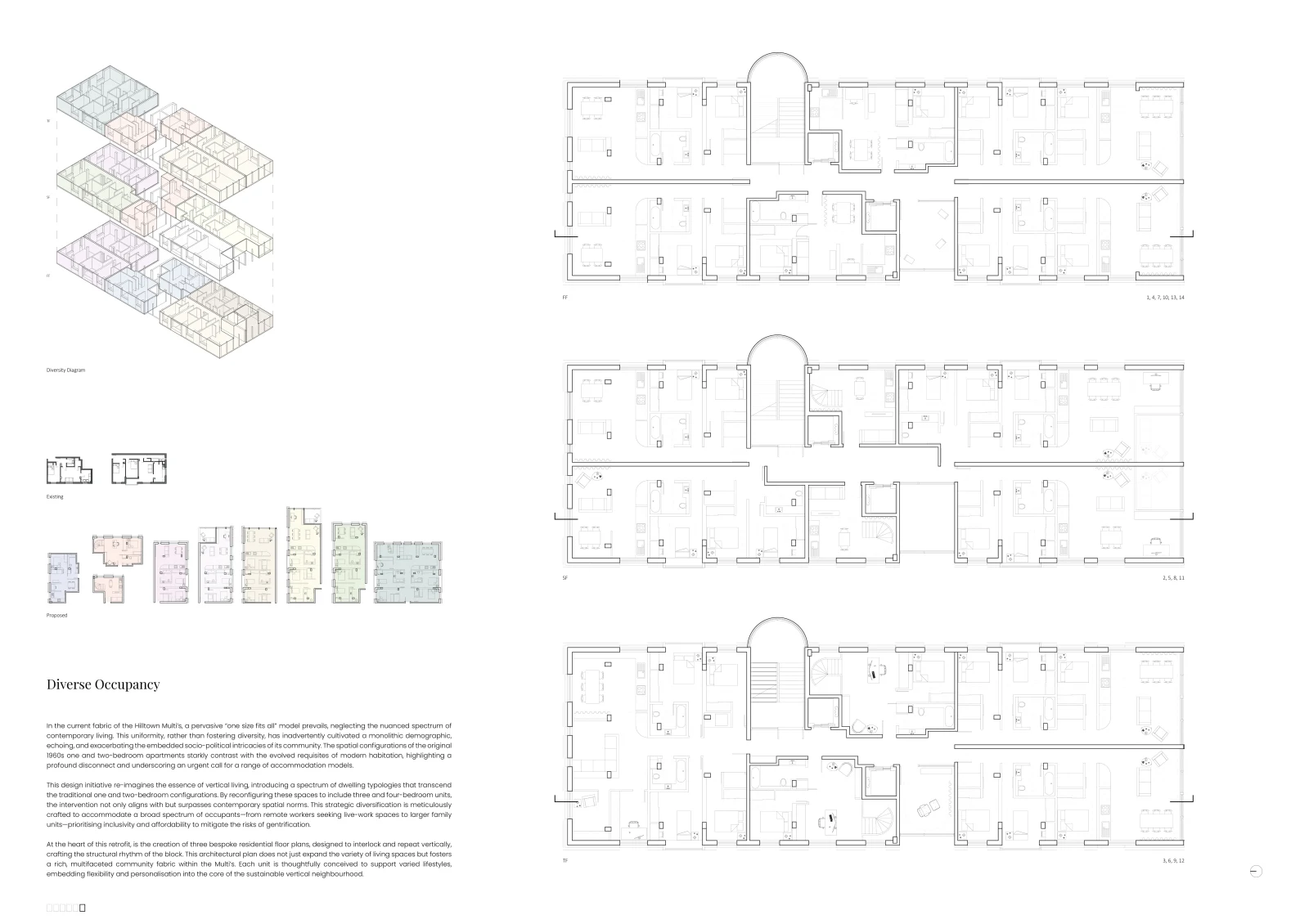Niall Davies-Hale – Architectural Assistant
10.04.2024
While visiting Edinburgh at the weekend, I walked past the Royal Scottish Academy where a banner reading ‘Architecture’ and ‘exhibition’ immediately grabbed my attention. As a student in the profession currently undertaking my Part 2 qualification, I’m always on the lookout for inspiration, or let’s be honest, a bit of help, so I made my way inside to see what the exhibition had to offer.

The exhibition has been running for 15 years now, and showcases selected graduates from degree shows in Scotland both in architecture and in art. This year, graduates from 2022 and 2023 were selected to present their work.

Upon entering the building, I headed straight for the architecture section. Of course, I have visited degree shows before and have exhibited my own work at Falmouth University (left) in 2022, but I was astonished by the quality of work and variety of the mediums on offer. There were various models dotted around the studio, as well as a film display, an interactive model making exhibit, sculptures, and of course the usual large format drawings.
It’s easy to gloss over these drawings, being that they are the more typical medium that architectural work is represented, but I assure you the drawings on offer at the RSA were in no way ordinary.

I particularly enjoyed the drawings of Yavor Nedelchev, who’s project titled ‘Ex Machina’ explores the juxtaposition of education and industry (below). The exhibition materials of the project were inspired by Hilla and Bernd Becher, photographers who became recognised for their distinct style of photographing industrial architecture and equipment which definitely steers towards an informative style rather than evocative, almost like a documentary in images.
You can really see this influence in Nedelchev’s drawings, each section is a blend of a typical architectural drawing and a Becher photograph whereas the elevational images start to include a bit more artistic flair. Even the grid format of the pinned up images appears to take inspiration from the Becher’s work.
As well as all of this, it’s clear Yavor took real care over the line weights in the drawings, the sections in particular have a decided hierarchy to them which helps the observer understand what the focus of the drawing is.


Another graduate I focused on was Marcus Myles, a student from Duncan of Jordanstone College of Art and Design, with a project titled ‘Mitigating the death of the multi’. Looking into the reuse of the Hilltown Multis in Dundee, the project investigates how retrofit can be used to challenge stigma around high-rise housing.
You can see there is a difference in approach when compared to the previous project; where Nedelchev appears to have a more narrative informed brief and concept and a set of emotive drawings, Myles has a much more literal brief with an informative and diagrammatic set of drawings.
Myles has re-organised the programme within the existing ‘multi’, allowing for a diverse range of dwelling typologies that are better suited to the broader spectrum of users, which maximises the social sustainability of the building but has the potential to extend the lifespan of the building too. I was particularly interested in the set of diagrams below, which describe at a high level how the final scheme was derived – something I find to be extremely helpful when viewing projects for the first time.
As I strolled from the architecture section of the exhibition and into the art area, I came across the works of Natasha Bucheit which I thought were definitely worthy of a mention. Now, I won’t pretend to understand the process behind the pieces or even what I think they are indicating, but I will say I think they’re very nice indeed. The shadows created by the semi-translucent grid of ‘Architecture for birds’ are incredibly satisfying, and the ‘Camouflage as daily practice’ series incorporate a colour palette that (whether intentionally or not) compliments the neighbouring sculpture so well.


The exhibition is open until the 24th of April, and if the trip to Edinburgh is a bit of a stretch you can always view the exhibition online here.



Written by Niall Davies-Hale (Instagram: @nialldavieshale)
Niall is a Part I architecture student who studied at Falmouth University, he is now enrolled in an apprenticeship course with Oxford Brookes University which will lead to qualification. In his spare time, he loves being outdoors either surfing, mountain biking, or playing rugby.


